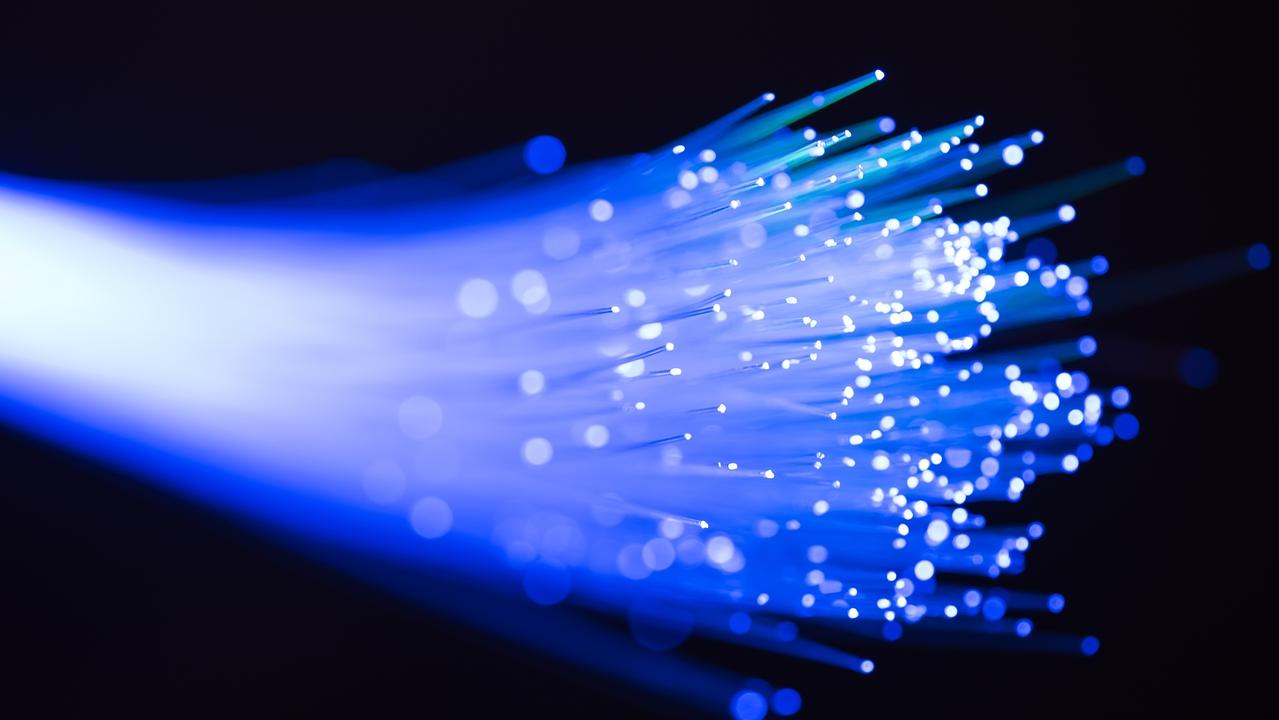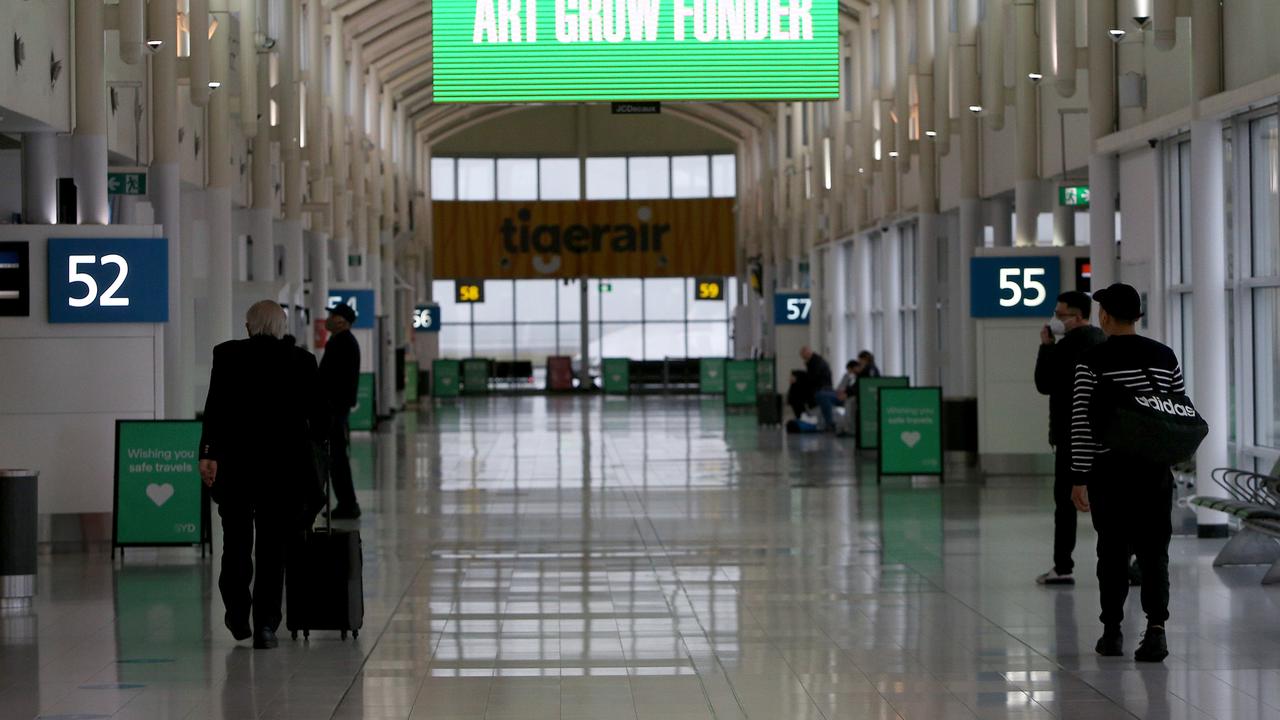Second Sydney airport means competition gets airborne
INFRASTRUCTURE Minister Paul Fletcher is to be congratulated for staring down Sydney Airport Corporation and committing to build the second Sydney airport, writes Terry McCrann.

Terry McCrann
Don't miss out on the headlines from Terry McCrann. Followed categories will be added to My News.
GOOD. Infrastructure Minister Paul Fletcher is to be very profoundly congratulated for staring down the extraordinarily greedy Macquarie-led — or is that repeating myself? — Sydney Airport Corporation and committing the federal government to build the second Sydney airport.
It will cost $6 billion. That will most decidedly be some of Treasurer Scott Morrison’s “good debt”. In any event it will be spread over the next 10 years or so, and at around $600 million a year essentially insignificant in the bigger budget scheme of things.
The airport should be developed as a full-on full-service competitor to the main airport at Mascot. It most certainly should not be just a “fill-in” for the main airport.
That would allow Sydney Airport to continue to gouge travellers as outrageously as it does now. Having a proper competitor — albeit, only in 10-plus years — should force it to trim prices and to improve services.
Perhaps it will be forced to do what it should have been forced to before its privatisation — or as a condition of the privatisation — back in 2002: and that is integrate the domestic and international terminals.
The sale of the airport was a huge black mark against the Howard-Costello government; a living case study of how not to sell a government-owned business where the only focus was on maximising the sale price.
Giving the buyer a 99-year lease wasn’t the major problem — that’s the equivalent of selling it outright. The disgrace was in giving it a first-refusal on any second Sydney airport; and so the ability to maintain an absolute monopoly of our premier national gateway for a century.
We — and Fletcher and the government — have spent the past three months waiting to see whether Sydney Airport, led by Kerrie Mather would go for the monopoly. Instead, it’s opted to maintain its super-high profit from Mascot.

Sydney Airport is without any argument the most profitable business in the country. How could it not be with the monopoly over our premier gateway?
It consistently makes 80c-plus of gross operating profit (EBITDA) on every dollar of revenue. This is more profitable even than Transurban, the (expense-to-motorists) road that swallowed Melbourne and went on to swallow Sydney and Brisbane.
Transurban “only” makes around 75c of gross profit in the revenue dollar. Although it does pocket an extraordinary 86c of gross profit in the revenue dollar on the longer-established and “gouge-expanded” CityLink.
It “only” makes Sydney Airport level returns around 80c in the revenue dollar on its Sydney roads; and just 71c in Brisbane — surely Queenslanders should tip in some more tolls to keep the wolf from Transurban’s door.
Sydney Airport “blinked” because it is just too profitable. If it took on the second airport — on the sensible terms set by the government, so it couldn’t be built cheaply as just a “dwarf” extension of the Mascot monopoly — it’s gouge-level group profitability would have been reduced to the level of just outrageous.
But even then only in a decade’s time. Bizarrely, Sydney Airport was ambushed by low interest rates, otherwise the lower profit of the second airport a decade ahead would have been washed away by the high discount factor.

So we end up with a very good outcome for the national interest. Over time it will work to reduce the huge negative of the disastrous privatisation, which gave a private company a government mandated monopoly to gouge not just all travellers through Sydney but the Australian public more broadly.
That said, Sydney shouldn’t need a second airport right now. If Mascot was run for maximum efficiency, was allowed to run for maximum efficiency — in particular, to operate 24 hours a day with 2017’s much, much quieter aircraft — it would be able to accommodate all growth in demand through 2035 at least.
But clearly now that the government has committed to Badgerys under no, under NO circumstances should Sydney Airport be given a (another) free lunch.
WOOLIES IS BACK
WOOLWORTHS has won back bragging rights on sales growth from its “major competitor”, and done so decisively — 5.6 per cent, Easter-adjusted, as against a mere 0.7 per cent for Coles.
And note, that was after a 4 per cent cut in its prices (ex-cigarettes) — that’s to say, the actual volume of goods wheeled out the door rose a thumping 9.6 per cent in the quarter.
It’s great for shoppers, but it costs. Just how much it costs will be revealed in the full-year numbers.
Three points briefly.
First, Big W is still a Big problem, possibly getting bigger. Unlike Masters though, it can be “solved”.
Either Woolies “finds its Kmart” and gets it generating a good return on capital or it sells it. That’s the key point: it can be sold, unlike Masters where there were no buyers and never were going to be.
Secondly, Woolies really should quit the hotels business. It’s too tiny and it comes with a bad PR dead-end — the pokies. But right now it needs hotels — in just one state, the Sunshine State — to sell grog.
If Queensland can come into the 21st century on this, Woolies should exit pronto.
Third point: Woolies and Coles are each other’s “prime competitor”, but their real threat is Aldi. And Amazon, coming up behind?
ON TO THE NEXT AMIGO
IT’S going to take a seismic event of well over 7.5, maybe even 8, on the financial Richter scale, to cause the Reserve Bank to change its official interest rate this year.
Just because we live in volatile times, absent such an event, I’d nevertheless circle the good old Melbourne Cup Day meeting as the first one at which a “normal” rate change — either way, but more likely up than down — could come onto the radar.
In the interim, as discussed the other day, it is the “other two amigos” — Janet and Mario — we have to watch; starting with Janet (Yellen of course, head of the Fed) tomorrow morning.
If she was smart — perhaps I should rephrase that: she’s obviously very smart, so let’s substitute “shrewd” — she and her colleagues would spring a “surprise” rate hike.
She’s way, way behind the game.
The latest weak US GDP numbers were misleading (and she knows that); the unemployment rate is well under 5 per cent and the “Trump factor” is going to drive confidence and the US economy.
She really needs to get the next rate hike done pronto; to reseize control of the rate meme.
It’s also the best way to “decouple’ the Fed from its Wall St ‘Stockholm syndrome.’
It would also be great for our RBA head Philip Lowe and indeed for Australia.
LOVELY SET OF
NUMBERS FOR ANZ
DRILL into the detail of the ANZ numbers and you would have to say they were pretty attractive.
That’s, from the broader public interest perspective — of having sound banks which are not using their oligopoly position to gouge Australians.
There was no question on the soundness: a healthy profit and very low bad debts.
There was no sign of any property implosion.
Equally, the ANZ’s interest margin is just 2 per cent — to cover all its costs and make a profit.
And its profit is around 12 per cent on shareholder funds — around what it needs to make, but nowhere near “too high”.
Originally published as Second Sydney airport means competition gets airborne


